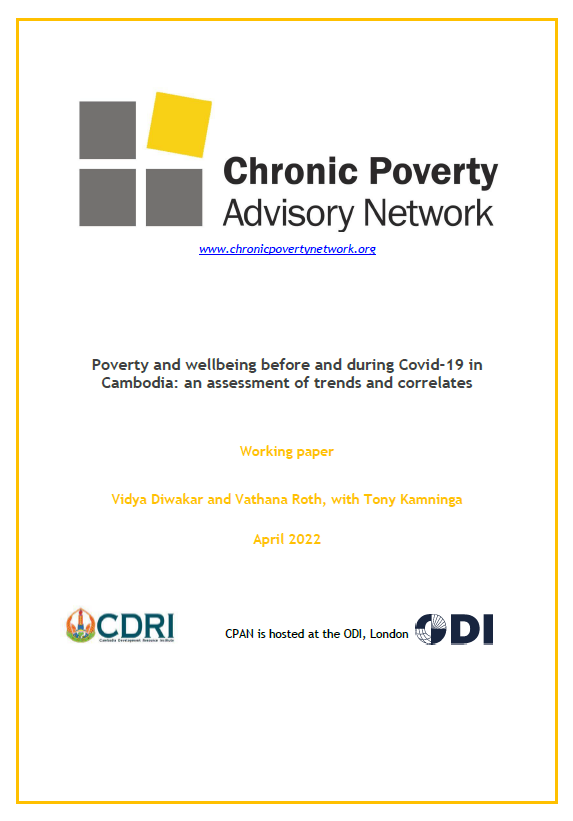This study investigates factors affecting welfare prior to and during Covid-19. It employs analysis of the Cambodia Living Standards Measurement—Plus Survey 2019/20 data, alongside five rounds of the Covid-19 High Frequency Phone Surveys between May 2020 and March 2021 to assess socioeconomic impacts of the pandemic.
The results point to a range of factors which could contribute to explaining poverty incidence prior to the pandemic. Household resource endowment was an important correlate of welfare, particularly in terms of possession of a mobile phone, ownership of livestock and land and access to electricity. Other factors include access to financial services, education, involvement in non-agriculture businesses, migration and remittances. However, a range of these variables are being constrained during Covid-19. For example, analysis of Covid-19 phone surveys points to the severity of income loss both in terms of breadth (share of households affected) and depth, the latter more pronounced in proportional terms among households in the bottom two quintiles with an already low consumption base, and also severe among IDPoor households. In other words, not only has income loss been deep, but it continues to get deeper over time, starting from a low base. This suggests that there are considerable processes of impoverishment (breadth), but also destitution (depth) in Cambodia as a result of Covid-19.
As a result of shocks, households were forced to rely on a range of coping strategies, especially reducing consumption, taking loans and, for poorer households in later survey waves, accessing social protection. Reliance on support from friends has been reducing over time, perhaps a result of community networks thinning out. Even though the roll-out of cash transfers has eventually reached many ID Poor households, levels may not be adequate resulting in reductions in food consumption among poorer households and continued food insecurity.
The results point to areas for policy and programming focus, including helping to narrow development gaps by area of residence alongside a regional levelling up focused on the Tonle Sap region. Alternatives to borrowing as a coping strategy are also worth considering, alongside improvements in inclusive access and quality of financial services to help mitigate the adverse consequences of indebtedness. Alongside this is a need to focus attention on children who have missed out on school and learning, particularly from poorer households.
Authors: Vidya Diwakar and Vathana Roth, with Tony Kamninga

